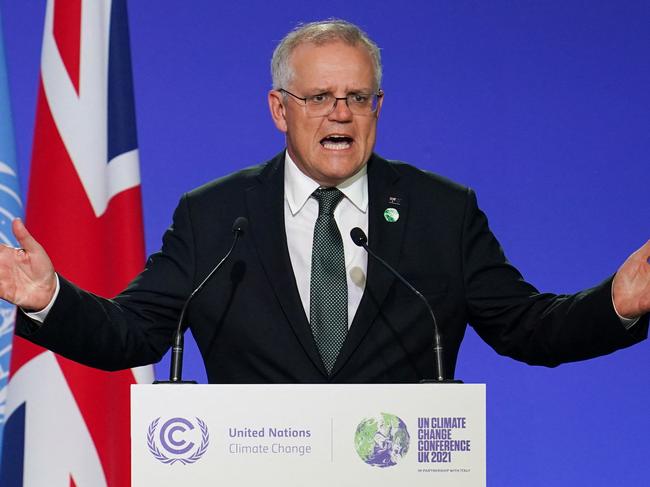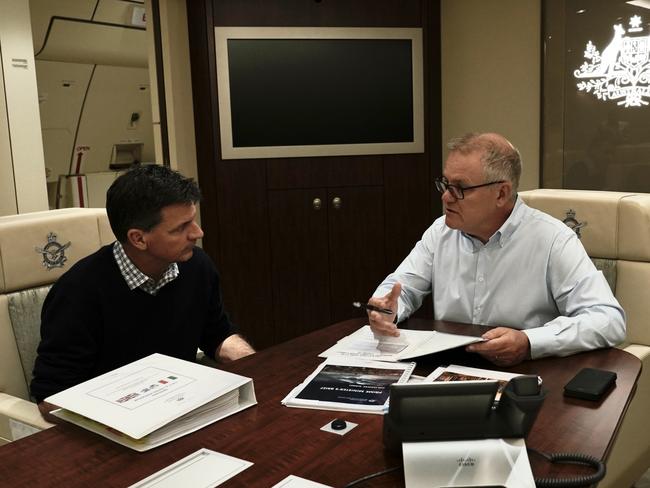Glasgow COP26 climate summit: Australia takes low emissions plan to the world
Under a new plan unveiled in Glasgow, Australia is positioning itself to be a leader in solar power that could fuel a clean hydrogen boom.
Environment
Don't miss out on the headlines from Environment. Followed categories will be added to My News.
Australia has taken its low emissions technology plan to the world, positioning itself to be a global leader in cheap solar power that could also fuel a clean hydrogen boom.
Energy and Emissions Reduction Minister Angus Taylor unveiled his new low emissions technology statement at the Glasgow climate summit on Tuesday night, detailing the advancements Australia is betting on to deliver half of the emission cuts needed to hit net zero by 2050.

“A step-up in global collaboration on practical solutions is the most meaningful and lasting impact this COP could have,” Mr Taylor said.
On the summit’s opening day, Scott Morrison also pushed Australia’s technology approach, saying decarbonisation needed to be achievable “not just in the developed economies of the North Atlantic, but in the developing economies of the Indo-Pacific as well”.
The Prime Minister upped Australia’s $1.5bn climate finance commitment to $2bn, with the cash particularly targeted at the Pacific, as UK Prime Minister Boris Johnson urged leaders to deliver a $100bn global fund.
But while more than 90 countries also signed a global pledge to cut methane emissions, driven by US President Joe Biden and the EU, Australia was still refusing to sign up.

A senior Biden administration official said the methane plan was “the single-best strategy to defeat the climate crisis that we have in the near term”, as new research from energy think tank Ember showed Australia’s coal mines were leaking methane emissions equivalent to a quarter of its annual carbon emissions,
Livestock feed supplements are considered an emerging technology in Australia’s roadmap, along with low emissions cement, hydrogen-enabled home appliances and small modular nuclear reactors.
But the plan prioritises developing clean hydrogen, energy storage, green steel and aluminium, carbon capture, soil carbon and ultra low-cost solar.
Mr Taylor said slashing solar costs to a third of today’s prices would unlock the potential of green hydrogen and give Australia a major advantage in “low-cost, bulk electricity supply”.
The statement also revealed the world’s first shipment of liquefied hydrogen from the Latrobe Valley in Victoria to Japan was due to hit the seas within six months.

On the first day of COP26, Sir David Attenborough delivered a powerful opening address, declaring this generation were “the greatest problem-solvers to have ever existed on earth” but would be doomed without focusing on the future.
Mr Johnson drew on the Scottish heritage of James Bond, saying climate change was a ticking time bomb which world leaders had to defuse like 007.
“It’s one minute to midnight on that doomsday clock, and we need to act now,” he said.
More Coverage
Originally published as Glasgow COP26 climate summit: Australia takes low emissions plan to the world




